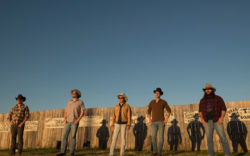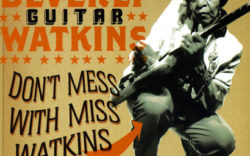To commemorate 15 years as a recording act, Canadian folk trio The Wailin’ Jennys released the aptly titled covers album Fifteen last October. It includes songs you might expect, such as the traditional tune “Old Churchyard” and the seamless conversion of Emmylou Harris’ “Boulder to Birmingham” to a harmony showpiece. The rest of the album isn’t quite as predictable, with the group adding its own spin to Tom Petty’s “Wildflowers,” Dolly Parton’s “Like a Clear Blue Morning,” Canadian art-pop icon Jane Siberry’s “The Valley” and other songs that hadn’t exactly frequented the bluegrass charts before now.
Bandmates Nicky Mehta, Ruth Moody and Heather Masse bring different musical backgrounds to the table, making it less odd that they can pull off the title track of a Petty solo album. Mehta writes roots-based folk songs informed by her pop-friendly tastes, Moody is a classically trained Celtic music expert, and Masse is a conservatory-schooled jazz vocalist. Furthermore, their knowledge of each other’s reference points has grown while touring the world together.
Simply put, each cover song was chosen based on its adaptability to both the sound and message of The Wailin’ Jennys. “They’re not super poppy songs, they lend themselves well to three-part harmonies, they’re pretty, and they fit an earthy, organic, acoustic approach,” Moody says.
The Wailin’ Jennys have never really subscribed to a single genre or sonic approach, even if the group’s career growth can be traced by looking at the bluegrass charts. “It’s funny that we got characterized as bluegrass early on,” Moody says. “We’ve never been even close to strict bluegrass, although you can definitely hear the elements on some material more than other material.”
By rearranging these songs to suit The Wailin’ Jennys’ talents, it becomes clearer that North American popular music’s song structures and lyrical themes aren’t too far removed from our shared culture’s global origins. Even Petty, a product of power pop, was scant steps away from folk festival stages. “Tom Petty had a way of making everything sound hooky,” Moody says. “That’s one thing he was gifted at. But if you listen to the lyrics, to me it just sounds almost like a traditional folk song.”
Beyond sounding good in three-part harmony, what further ties the songs of Petty to the songs of Siberry is his use of universal themes. For example, “Wildflowers” is a story about fitting in, spread to the masses in the guise of a pop song. “We were attracted to universal themes that people can relate to in their own lives,” Moody says. “We’re just attracted to songs that feel like they help us make sense of the world. They might do that for other people, as well. Maybe that’s why we picked those songs.”
The presentation of cover songs as an anniversary gift to fans makes sense, just as the occasional surprise cover awards fellow travelers at folk festivals and bluegrass gatherings. “We were celebrating our 15th anniversary, and one of the things we did when we first started out as a band was doing other people’s songs that we loved,” Moody says. “It’s kind of a tribute to that.”
Although motherhood and living in different cities limits each member’s availability, the band is reaching uncharted ground on its current tour. This month marks the group’s first stops in both Athens and Atlanta.
Time is at a premium for the band, with Fifteen coming together after two days of arranging songs and five days of recording. Fortunately, songwriting and harmonizing are like bicycle memory when the Jennys reconvene on the road, meaning that any down time here in the South might lead to a future album cut.
“When we have an extra 20 minutes at soundcheck or have an afternoon together on the road, we’ll sometimes get together and work on a song or play songs for each other,” Moody says. “We don’t have a studio booked or anything, but there’s stuff percolating for sure.”
Like what you just read? Support Flagpole by making a donation today. Every dollar you give helps fund our ongoing mission to provide Athens with quality, independent journalism.










